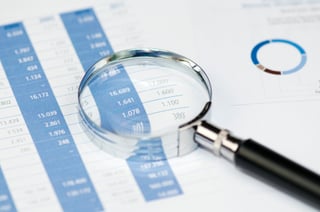 While R&D tax incentives are a profitable opportunity to gain tax credits and increase savings, proper documentation is required to fully reap the benefits of this tax saving strategy.
While R&D tax incentives are a profitable opportunity to gain tax credits and increase savings, proper documentation is required to fully reap the benefits of this tax saving strategy.
As more companies take advantage of R&D credits under Internal Revenue Code 41, businesses encounter several difficulties in determining what expenses are eligible for the R&D tax incentive.
Two questions businesses should ask themselves when preparing to claim R&D expenses are:
- What company activities are eligible for the R&D credit?
- Are the R&D expenditures related to these activities properly identified and captured?
By adjusting your R&D tax saving strategy to include proper documentation and identification of eligible claims, your business maximizes its tax savings.
Claiming Employee Time As An R&D Expense
In most cases, businesses gain significant tax savings when filing for wages paid to in-house engineers, scientists and other technical personnel who perform research activities.
Identifying and qualifying these employees is challenging, however. Businesses have to differentiate between activities that qualify for R&D credits, such as experimental prototype development, and activities that do not qualify, such as routine engineering tasks.
Most companies use one of two methods to determine how an employee’s qualified time is captured for the R&D credit:
- Utilizing formal project accounting to track their R&D expenditures on a regular basis
- Submitting for credits with no formal process in place
While project accounting is not specifically required in order to claim R&D expenses, companies must retain records in enough detail to substantiate that expenditures claimed are eligible for the tax credit.
Having a well-detailed process in place is a beneficial tax solution that ensures the correct amount of eligible wages is being claimed and documented.
The most effective way to document employee R&D activities is to require that employees track how much time they spend on daily tasks. Alternatively, if employees do not track their daily time, they must record and allocate their activities in qualified and non-qualified tasks.
Claiming Supplies As R&D Expenditures
Supplies used for research are often overlooked as a qualified R&D expenditure. Before you begin claiming for supplies, you must first know which of your supply expenses qualify for the R&D tax incentive.
For R&D credit purposes, supplies are defined as any tangible property other than land, land improvements or other property subject to depreciation that is used or consumed during research.
Supply expenses must be directly linked to qualified research activities, including prototypes and testing materials. Travel, shipping and royalty expenses, however, do not qualify as supply-related R&D expenses.
As with employee R&D activities, supplies must be properly documented in order for businesses to successfully claim tax credits. Many companies fail to claim their supply expenses because they were not able to prove how these costs related to research, or conversely, they did not recognize them as eligible expenses.
For example, engineers at a mobile gaming company use handheld devices such as smartphones to test out mobile games while they are under development. Since these devices are used for testing, the costs are an eligible supply expense.
Unfortunately, many gaming companies do not include these expenses when claiming their R&D credit because they believe supplies are limited to expenses a pharmaceutical company or similar business may incur for chemicals or experimental formulations.
Examining Your Tax Saving Strategy And Process
While there are a limited number of expenditures that qualify for the R&D credit, a significant number of rules and regulations determine what activities are eligible and how to properly document these expenses.
As you evaluate your expenditures, consider what types of documentation you have to support each claim. Is your documentation sufficient, or are there areas where you need more substantiation?
The more information you have to justify your R&D expenses, the more success you have if your claims come under examination. If you have questions about specific claims, speaking with an industry professional is a beneficial way to address concerns.
Ready to develop your own tax saving strategy and find out which of your expenses qualify for R&D tax credits? Call 866-444-4880 to speak with an experienced tax expert or click here to review your current strategy.


